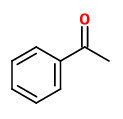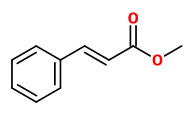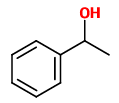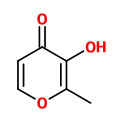Trifolium pratense L. - Trifolium pratense L. - Fabaceae - red clover, purple clover, Rotklee
Annual or biennial herb, up to 40cm high, native to the northern hemisphere, cultivated as fodder crop; leaves palmately 3-foliolate, leaflets ovate or elliptic; flowers 30-70, in dense globose or ovoid, terminal, sessile to shortly pedunculate heads, corolla purple to pink or rarely white; legume ovoid, seed 1, yellow or brown.
http://www.efloras.org/florataxon.aspx?flora_id=2&taxon_id=200012343
The major volatile components of T.pratense identified by headspace GC-MS were, for the leaves, (Z)-3-hexenyl acetate, (Z)-3-hexenol and (E)- and (Z)-β-ocimenes, for the flowers, acetophenone, methyl cinnamate and 1-phenylethanol and, for the seed pods, (E)- and (Z)-β-ocimenes, an unidentified sesquiterpene hydrocarbon and longifolene.
[Volatile components of red clover leaves, flowers, and seed pods: possible insect attractants., Buttery, R.G., Kamm, J.A., Ling, L.C., Journal of Agricultural and Food Chemistry, 32(2), 1984, 254-256]
„The essential oils of red and white Austrian clover flowers (Trifolium pratense L. and Trifolium repens L.) were analyzed by GC-FID, GC-MS, and GC-olfactometry (GC-sniffing technique). More than 50 compounds were identified in the samples. The main constituents (concentration higher than 2%) of the investigated samples were maltol (8.2%), linalool (4.2%), 1-phenylethyl alcohol (3.2%), phenol (2.9%), phenylethyl acetate (2.7%), acetophenone (2.4%), and (Z)-3-hexenyl acetate (2.2%) for red clover flowers and maltol (5.3%), linalool (3.8%), phenol (3.6%), phenylethyl acetate (3.3%), and 2-phenylethyl alcohol (2.8%) for white clover flowers.“
[Buchbauer, Gerhard, Leopold Jirovetz, and Alexej Nikiforov. „Comparative Investigation of Essential Clover Flower Oils from Austria Using Gas Chromatography-Flame Ionization Detection, Gas Chromatography-Mass Spectrometry, and Gas Chromatography-Olfactometry.“ Journal of Agricultural and Food Chemistry 44.7 (1996): 1827-1828]
The most abundant volatile compounds in the green sample of red clover were 3-octanol, 6,10,14-trimethyl-2-pentadecanone, benzaldehyde, (Z)-β-caryophyllene, β-farnesene, 3-methyl-1-butanol and 3-octanone. In hay, reductions of the percentages of alcohols, such as 3-methylbutanol and 1-hexanol, of aldehydes and of low boiling point ketones are observed; The sesquiterpene β-farnesene (10%) and the phytol degradation product 6,10,14-trimethyl-2-pentadecanone (12%), together with phenylethyl alcohol and (Z)-β-caryophyllene, were the most abundant compounds detected. In silage, as a result of the fermentation of fresh red clover, esters (ca. 46%) are a more representative class of compounds. The most abundant components were ethyl hexanoate, 3-methylbutyl butanoate, and ethyl-2-methylpentanoate, furthermore phenylethyl alcohol, 3-methyl-1-butanol, and 3-methylbutanoic acid.
[Volatile composition of red clover (Trifolium pratense L.) forages in Portugal: The influence of ripening stage and ensilage., Figueiredo, R., Rodrigues, A.I., do Céu Costa, M., Food chemistry, 104(4), 2007, 1445-1453]
Main components of the steam distilled pale yellow oil (0.018%) of the fresh plant material were 4-hydroxy-4-methyl-2-pentanone (16.5%), 2-phenylethanol (12.2%), benzylalcohol (11.6%), hexadecanoic aicd (6.2%), 6,10,14-trimethyl pentadecan-2-one (6.1%), phenylacetaldehyde (5.1%), 2-methylbutanol (3.8%), thymol (3.2%), 3-methylbutanol (2.9%), 1-octen-3-ol (2.2%), 1-phenylethanol (1.3%), benzaldehyde (1.0%), and carvacrol (1.0%). Interesting minor components were e.g. acetophenone (0.2%), furfural (0.3%9, decanal (0.2%), linalool (0.4%), p-vinylguaiacol (trace), eugenol (0.7%), and methyleugenol (0.3%).
[Tava, Aldo, et al. „Volatile constituents of Trifolium pratense and T. repens from NE Italian alpine pastures.“ Natural Product Communications 4.6 (2009): 1934578×0900400619]
Main volatile components of the steam distillate of Trifolium pratense L. ssp. nivale (Sieber) Asch. et Gr. plants at the flowering stage were phenylacetaldehyde (13.1%), 1-octen-3-ol (12.5%), 2- and 3-methylbutanol (6.8/8.0%), 2-phenylethanol (7.9%), cis-3-hexenol (5.1%), benzaldehyde (4.5%), hexahydrofarnesylacetone (4.4%), and benzylalcohol (3.1%).
[Cecotti, Roberto, et al. „Volatile constituents of Trifolium pratense spp. nivale quantified at different growth stages, and evaluation of their antimicrobial activity.“ Natural product communications 8.11 (2013): 1934578×1300801131]
Several flavonoids were identified in ethanolic red clover extracts, among them genistin, isoquercitrin, ononin, daidzein, sissotrin, formononetin and biochanin A.
[Analysis of flavonoids from red clover by liquid chromatography—electrospray mass spectrometry., He, X.G., Lin, L.Z., Lian, L.Z., Journal of chromatography A, 755(1), 1996, 127-132] http://eurekamag.com/pdf/038/038901016.pdf
„The pre-formulated red clover extract had an EC50 of 2.0–2.2 μg/mL in the AP [alkaline phosphatase] estrogenicity assay, and IC50s of 18.4–32.6 μg/mL and 1.9–3.4 μg/mL in the ERα and ERβ [recombinant human estrogen receptors] binding assays, respectively. The pre-formulated extract was composed of 35.54% isoflavones, 1.11% flavonoids, 0.06% pterocarpans, ≤ 0.03% coumarins, and ≤ 0.03% tyramine. Daidzein, genistein, formononetin, biochanin A, coumestrol and naringenin were estrogenic in the AP assay, and all of these, except formononetin, bound to one or both ERs.“
[The chemical and biologic profile of a red clover (Trifolium pratense L.) phase II clinical extract., Booth, N.L., Overk, C.R., Yao, P., Burdette, J.E., Nikolic, D., Chen, S.N., Farnsworth, N.R., Journal of Alternative & Complementary Medicine, 12(2), 2006, 133-139] http://www.ncbi.nlm.nih.gov/pmc/articles/PMC1780253/
T.pratense is used in traditional medicine of India as deobstruent, antispasmodic, expectorant, sedative, anti-inflammatory, and anti-dermatosis agent.
[C.P. Khare, Indian Medicinal Plants: An Illustrated Dictionary, Springer 2007]
„There is evidence of a marginally significant effect of T. pratense isoflavones for treating hot flushes in menopausal women. Whether the size of this effect can be considered clinically relevant is unclear. Whereas there is no apparent evidence of adverse events during short-term use, there are no available data on the safety of long-term administration.“
[Trifolium pratense isoflavones in the treatment of menopausal hot flushes: a systematic review and meta-analysis., Coon, J.T., Pittler, M.H., Ernst, E., Phytomedicine, 14(2), 2007, 153-159]
„Currently, red clover extract is used to treat menopausal disorders as an alternative to classic hormone therapy. Several human and animal studies have attributed hypolipidemic, hypoglycemic, or antiatherosclerotic effects to red clover extract or isoflavones…. The red clover extracts and the compounds genistein and biochanin A were potent PPARγ3 ligands and activators. Several metabolites exerted higher binding affinities or transactivational activities than their precursor molecules. 6-Hydroxydaidzein exerted a more than 100-fold higher binding affinity than its precursor daidzein. The maximal transactivational activity of 6-hydroxydaidzein and 3′-hydroxygenistein exceeded even that of rosiglitazone, a known PPARγ agonist… Red clover extract, which is currently used for treating menopausal disorders, could be simultaneously used for ameliorating the metabolic syndrome.“
[Red clover extract: a putative source for simultaneous treatment of menopausal disorders and the metabolic syndrome., Müller, M., Jungbauer, A., Menopause, 15(6), 2008, 1120-1131]
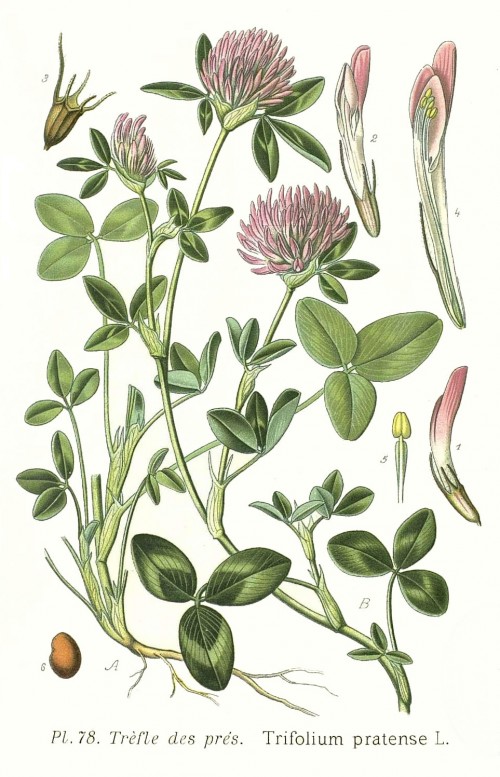
Masclef,A., Atlas des plantes de France, vol.2 t.78 (1890)
http://plantgenera.org/species.php?id_species=1032055
Trifolium pratense ssp.pratense, Erholungsgebiet Wienerberg Westteil
© Rolf Marschner (2006),
www.botanische-spaziergaenge.at

